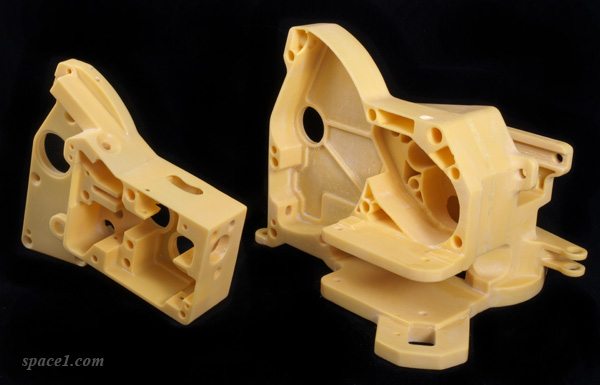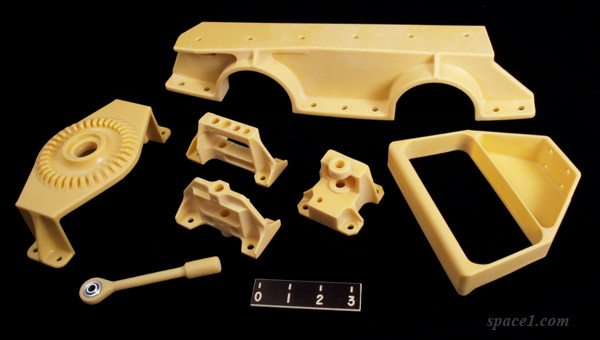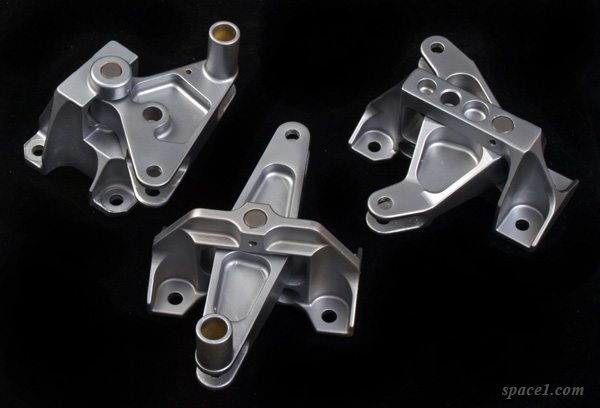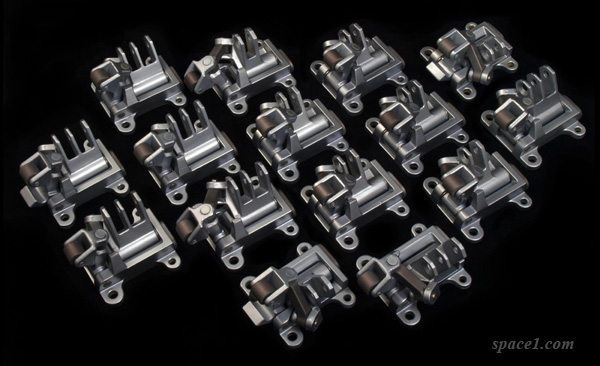
Historic Space Systems
Historic Space Systems is an exhibit and consulting company in Danville, Ohio, owned and operated by John Fongheiser. Established in 1990, Historic Space Systems has been commissioned to create several large-scale simulators, exhibits, and interactive software simulators of US-manned spacecraft and aircraft for national museums.
Making History 3D
Of all the exhibits Historic Space Systems has created, the Apollo Spacecraft has been one of the most fulfilling from an engineering and historical standpoint. Fongheiser has “always been fascinated by the unified design of the Apollo hatch,” a complicated unit that was essential for the success of the Apollo Moon Program. The famous Apollo II spacecraft was commanded by Neil Armstrong and made it to the moon in 1969.
The famed flight and subsequent lunar landing was the result of years of testing and equipment redesigns. The first version of the final craft, Apollo 1, caught fire during the launch pad test in 1967, killing three astronauts inside. After this tragedy, the Apollo program extensively modified and tested the unit before running preliminary trials.
“This Apollo 11 is the result of a lot of engineering effort and design to make it a safe way for astronauts to do their missions,” said Fongheiser. “What you see here is what they flew on all the missions.”

Digital rendering of the Apollo Hatch

Model of the hatch
Fongheiser spent several years deciding on a 3D printer. He attended several tradeshows and saw a number of different 3D printers in operation. Fongheiser was looking for detail with a relatively low material cost and was impressed with the ULTRA DLP, which replicated the detail he needed and also had a large build envelope. Fongheiser felt the material price was comparably lower, and moreover the ULTRA, along with the rest of the EnvisionTEC family of 3D printers, had a reusable basement. “Some required disposable basements and I didn’t like that idea,” Fongheiser said. The way that the 3D printer works, with a minimum of moving parts, and the technology’s use of volumetric pixels to build an entire layer with one flash rather than scanning like other machines impressed Fongheiser.
Historic Precision
Historic Space Systems previously used a milling machine for the work later optimized for the ULTRA. The mill was necessary to cut and fillet large, flat items of the display, such as a button panel. Spacecraft have rounded knobs, buttons, and curved pieces:
“In space systems the objects have to be curved, all edges have to be rounded, and everything is filleted,“ said Fongheiser. Creating these items through machining necessitates multiple tools for each pattern, one for the basic cutout and then another to add fillets. “With 3D printing you can just print [the piece] as it is,” Fongheiser said.
For the Apollo hatch, the ULTRA would recreate the body of the system. The 3D printer would not only be able to build the filleted parts that previously required milling, but also it would create the body of the hatch along with the cutout portions of the final design, which were included to save weight.
Fongheiser used SI500 material to 3D print the Apollo 11’s complex parts. Some aspects of the project, such as the gearbox, “the heart of the redesign,” were made by building the pieces on the ULTRA and then joining them together using Facsimile® from Flexbar. This material bonds well with EnvisionTEC parts, and strengthens thin or delicate pieces when used as a coating.
- Apollo 11 Gearbox
- Bell-crank assemblies
- 15-piece assemblies
An important aspect of the Apollo 11 hatch is a set of 15 articulating latches that lock the hatch door along the perimeter, sealing the craft off from space. Historic Space Systems’s articulating latch assembly models are each composed of 8 3D printed pieces and held together with metal hardware. The latches continue to exemplify the marvel of the Apollo program’s engineering efforts. The failed Apollo craft was not designed to be opened during missions, but these latches enabled the hatch to be opened and locked in space reliably.
Another crucial component of the design is its set of bell crank assemblies. These assemblies are composed of a bracket and a moving piece, the latter forming an important part of the design because it allows the structure to stretch and decompress from heat and temperature change. As the hatch is being locked, the roller connects with the inside of the hatchway and pulls the hatch closed. It was so successful that the same design was used on the hatches of the space shuttle.
Professional Support
Fongheiser optimized his 3D printing usage with the help of technical support from EnvisionTEC. EnvisionTEC staff figured out better ways to support pieces through repositioning and adjusting settings in Magics CAD software. “Your technicians are amazing people – they know the systems,” Fongheiser said. “Just outstanding. They know their stuff extremely well and they’re very friendly, totally impressed with them.”






